Traveling on behalf of The Metropolitan Museum of Art has always been a great honor for me, but one of the highlights of my nearly twenty-three-year career at The Met came when I participated in the Art Libraries Society of North America’s annual Study Tour of libraries and archives, which took place last October in Florence, Italy. I had not been back to Florence since I spent a life-changing semester there in college (I won’t say when!), so this was an opportunity not only to revisit one of my favorite cities but also to visit it as a professional librarian, learning from and with other professionals from Italy and North America. Below are a few highlights from the week-long program, which included visits to nine institutions and concluded with brief presentations by the tour participants. And let’s not kid ourselves—of course there was no shortage of delicious food and wine!
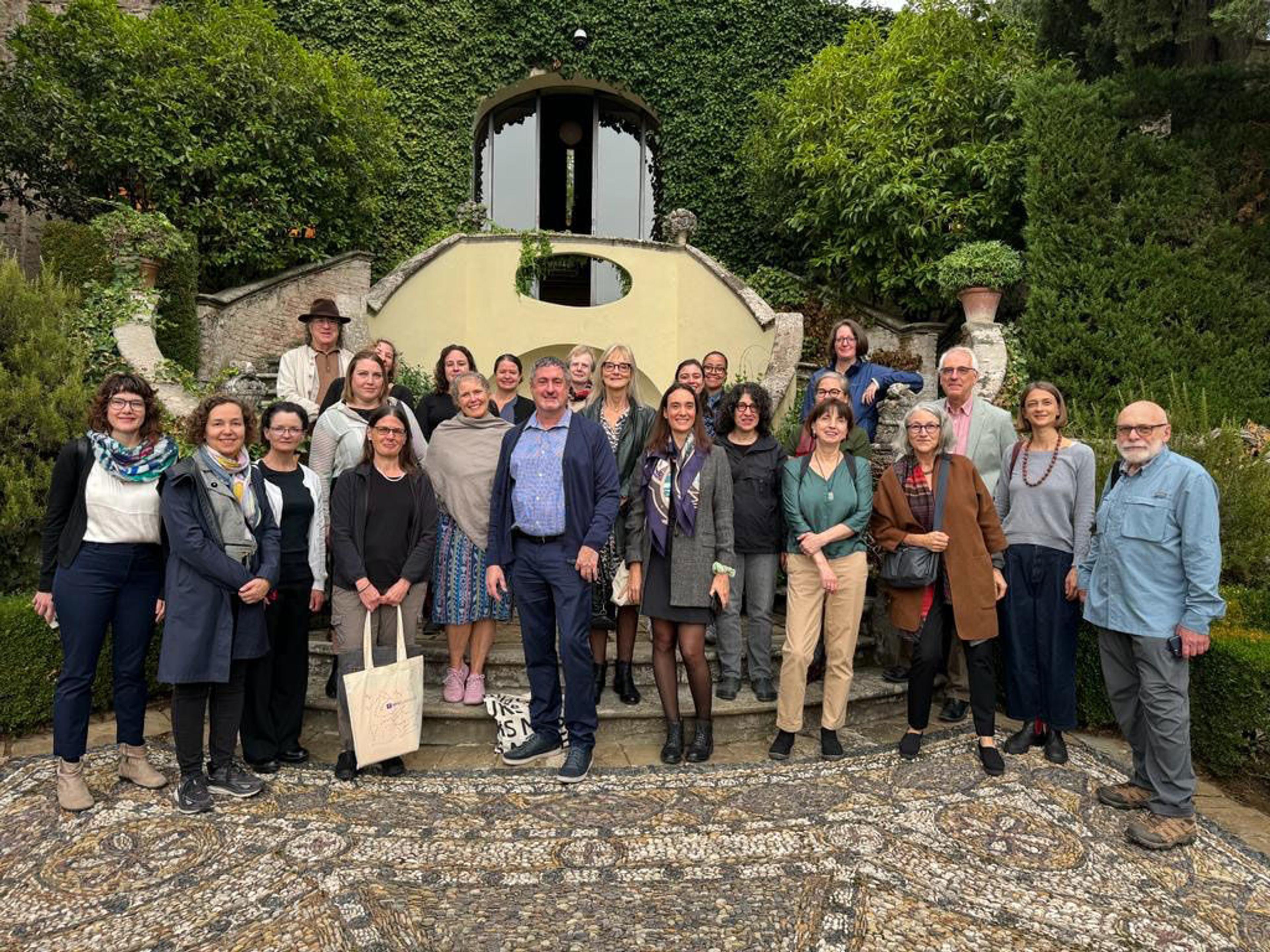
The 2023 ARLIS/NA Study Tour cohort at Villa I Tatti in Florence, Italy. Photo by I Tatti staff
Our first visit was to the Uffizi Library, which is located within the Uffizi complex in the illustrious hall of the former Magliabechiana Library. Antonio Magliabechi was a scholar and librarian to the Grand Duchy of Tuscany in the 17th and 18th centuries. Upon his death, he deeded his extensive personal library to the public, creating one of the first public libraries in Italy. Today the library houses materials focusing on Florentine art and the history of the Uffizi.
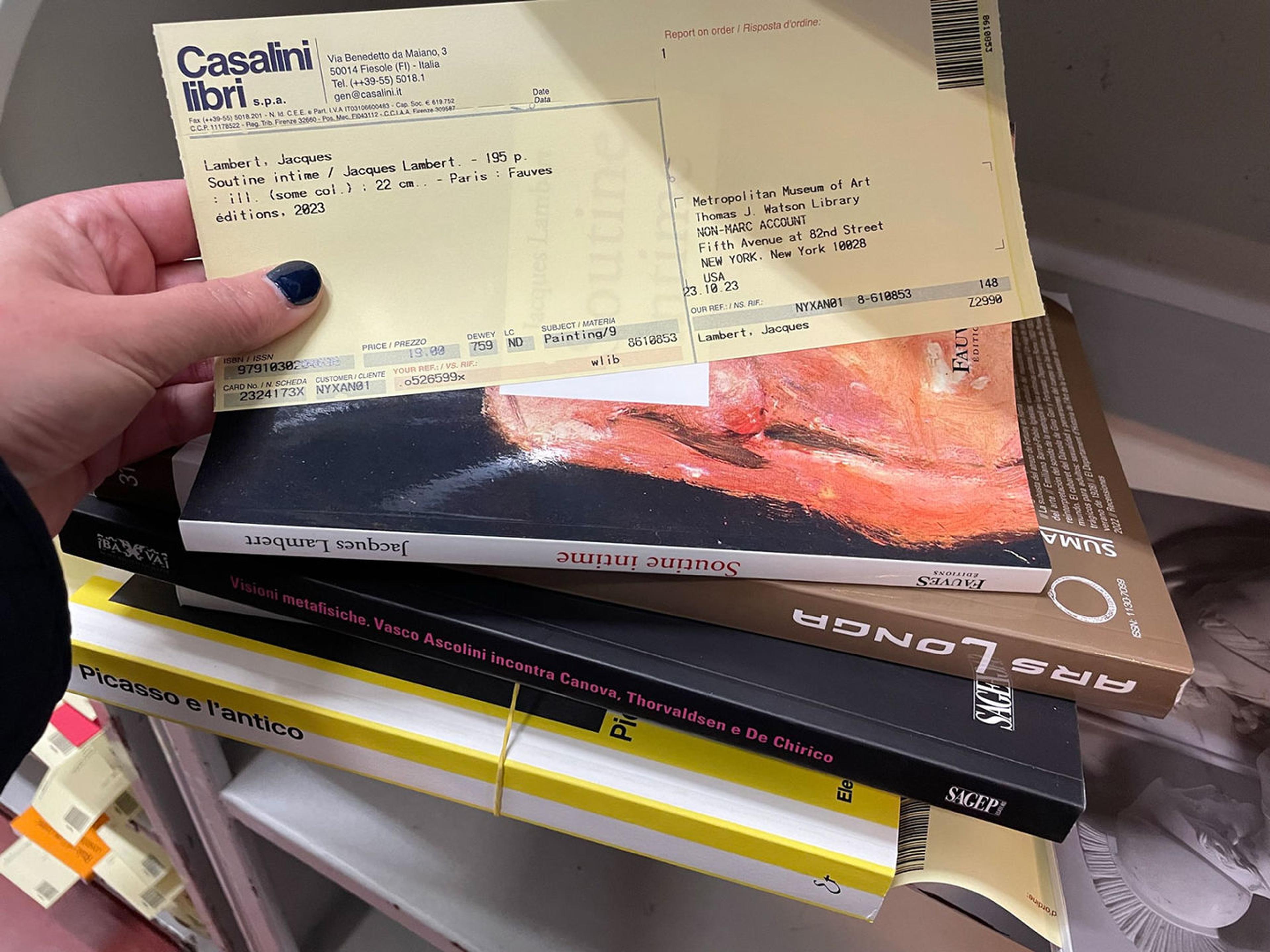
Books headed from Casalini Libri headquarters in Fiesole, Italy, to Watson Library. Photo by the author
One of my responsibilities with the Watson Library is selecting Italian-language materials for our collection, so I was excited for our next visit: the headquarters of Casalini Libri. Located just outside of Florence in the hilltop town of Fiesole, Casalini Libri is perhaps the most important supplier of art publications from Italy. After an extensive tour of the facilities (where of course I scoped out publications destined for Watson Library), the Casalini family hosted us for a reception at their historic home with sweeping (if somewhat drizzly) views of Florence below.
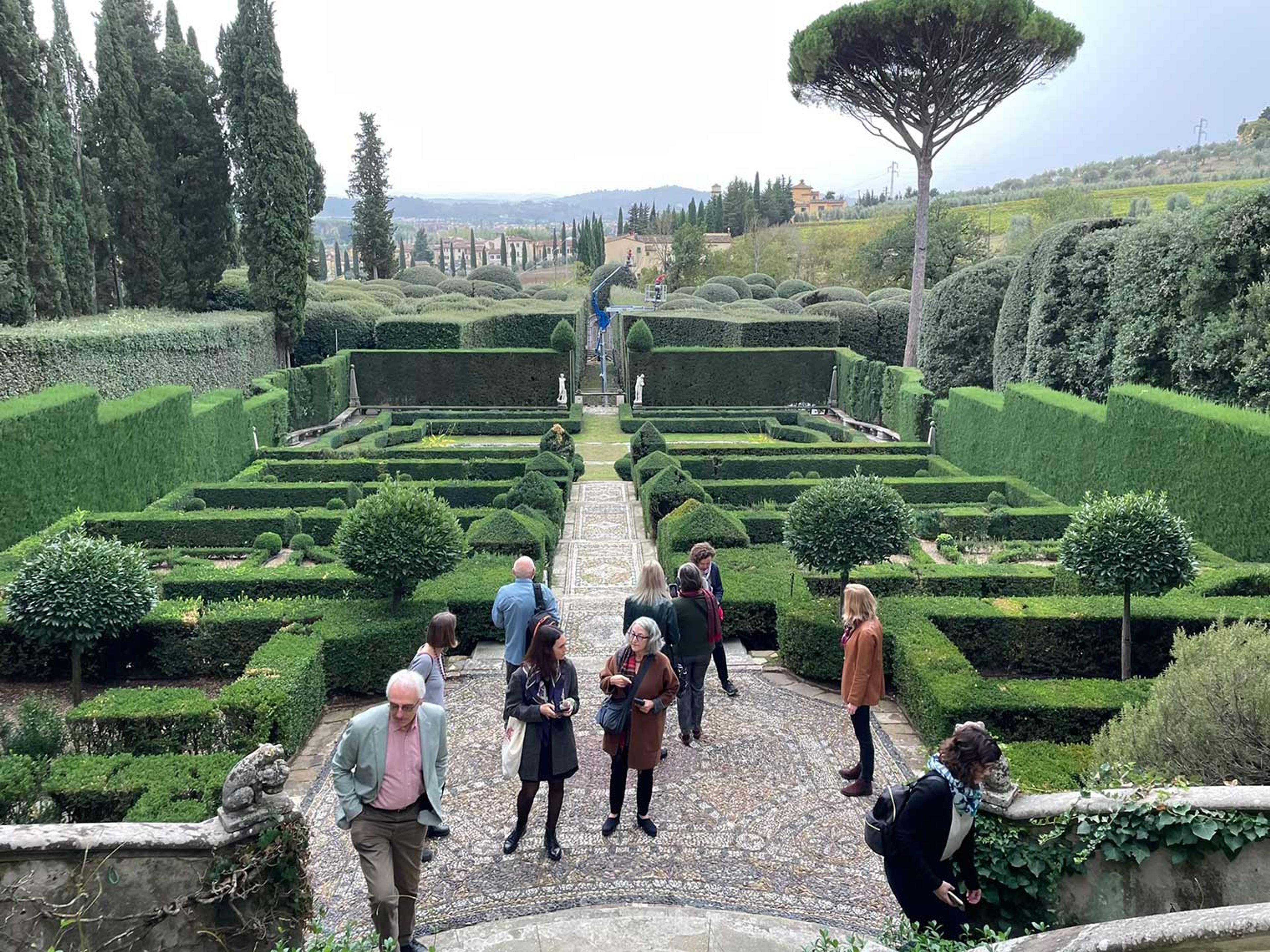
Meticulously landscaped gardens at Villa I Tatti, The Harvard University Center for Italian Renaissance Studies. Photo by the author
The rainy (but atmospheric!) weather continued the next day as we visited two other sites located in the hills around Florence: I Tatti, The Harvard University Center for Italian Renaissance Studies, and the Historical Archives of the European Union at the European University Institute. Villa I Tatti is the former home of Bernard Berenson, a preeminent American scholar of Renaissance Art and later also an advisor to collectors of Old Masters. Berenson was passionate about his personal library of about 52,000 volumes, each one personally selected and read (or at least skimmed) by Berenson himself. Berenson famously considered Villa I Tatti to be “a library with rooms attached for living,” and upon his death in 1959, he bequeathed it to Harvard University. Today the library houses over 210,000 print volumes, and I Tatti hosts up to 50 fellows and residential scholars at the villa every year.
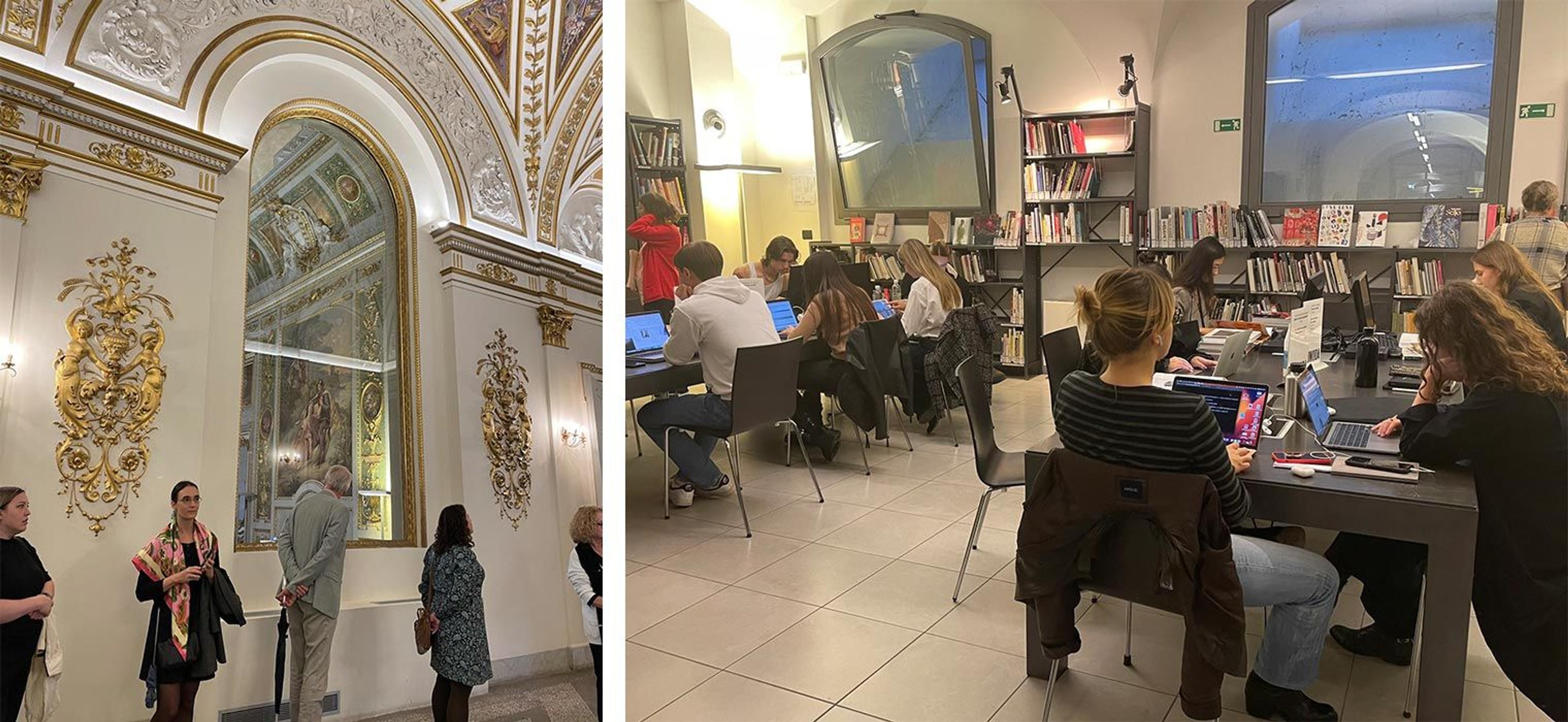
Polimoda Library. Left: Ornate entrance at the Villa Favard. Right: inside the bustling library. Photos by the author
The following day included visits to the National Central Library (BNCF), Florence’s national public library housing over six million print volumes, and the library at the Polimoda Fashion School, one of Europe’s largest fashion libraries. Designed with visual- and tactile-oriented audiences in mind, Polimoda was bustling with students from across the globe.

Left: Detail from a tabletop made from pietre dure (semiprecious stone), held at the Museo Opificio delle Pietre Dure. Photo by the author. Right: Palazzo Vecchio, Florence, in 1885. Photo from the Museo Nazionale di Fotografia F.lli Alinari website
The next day was perhaps my favorite: it included visits to Fortezza Da Basso (the restoration workshops of Opificio delle Pietre Dure) and the Alinari Archives. The Opificio delle Pietre Dure was founded in 1588 by the Medici family as a workshop specializing in semiprecious stone inlay (one of its major projects was the jaw-droppingly gorgeous Cappella dei Principi at the Basilica of San Lorenzo in Florence), and in the late 19th century, it also became a restoration laboratory. After the devastating flood of 1966, the Opificio and restoration labs were moved to the Fortezza Da Basso, and today they employ about 90 conservators, art historians, and other researchers in media of all kinds, including textiles, paintings, bronzes, paper, mosaic, wood, fresco, and of course pietre dure. It is also home to one of the most important and selective conservation programs in Italy.
The staff at Fortezza Da Basso and the Alinari Archives kindly requested we not take or share photos during our visits, so the photo of the owl above at left was from my own visit to the Museo Opificio delle Pietre Dure (quiet, small, and absolutely delightful – a perfect antidote to the crowds at the Uffizi and Duomo). The photo at right is from the Alinari Archive database. In the 1850s, three brothers (Leopoldo, Giuseppe, and Romualdo Alinari) founded a photography laboratory in Florence and later opened a publishing house. Over time they amassed a huge photography archive of “Italy's historical, artistic and architectural heritage, museum collections and landscape, spreading Italian culture and Fine Art throughout the world” [1]. Their archive is now managed by the Fondazione Alinari per la Fotografia and is open to the public.

Kunsthistorisches Institut. Left: Library Director Jan Simane discussing the library’s current exhibition. Right: Viewing the photo archives at the Photothek. Photos by the author
Our last day was spent at the Kunsthistorisches Institut in Florenz (affectionately known as “the Kunst”), a research institute dedicated primarily to the history of art and architecture of Italy, Europe, and the Mediterranean. It is run and funded by the prestigious Max Planck Society in Germany. We visited both their library—one of the oldest and important art research libraries in the world—and photo archive (the “Phototek”). Our fantastic, unforgettable, exhausting week concluded with a symposium at the Kunst’s Casa Zuccari titled “Building Bridges: Art Libraries’ Synergies and Strategies Between Florence and North America,” in which many of the tour hosts and participants (myself included) provided brief presentations on current projects.
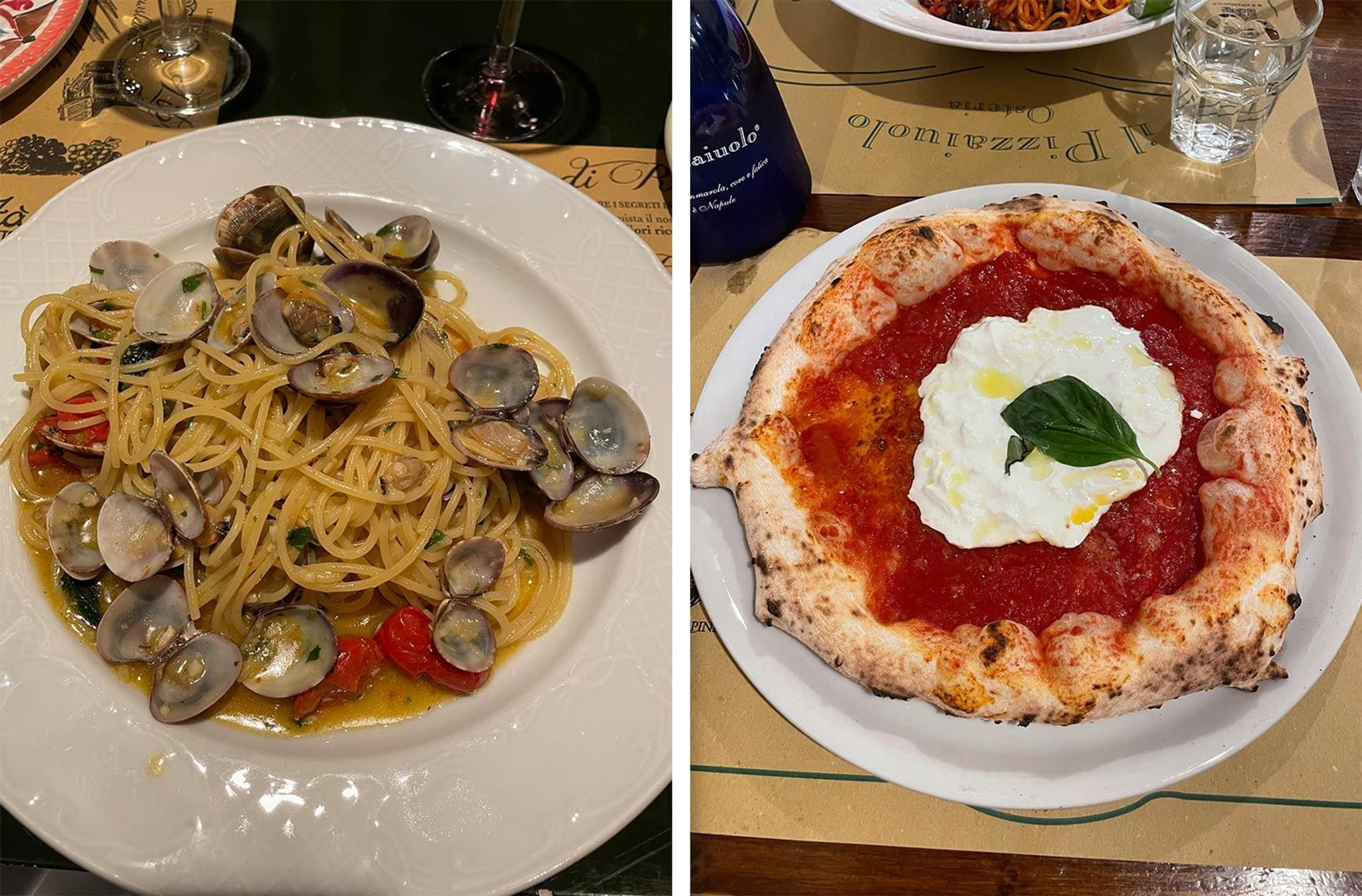
Left: Spaghetti alle vongole, from Trattoria Zà Zà. Right: Pizza rossa con burrata, from Il Pizzaiuolo. Photos by the author
A trip to Italy—even a work trip—is going to be filled with incredible food and wine. I ate more than one bowl of spaghetti alle vongole (it was clam season, after all), more than one pizza, daily gelatos (sometimes two—my favorite might have been the stracciatella at Cantina del Gelato), so many cappuccinos (only before 11am) and espressos (simply called caffè there, any time of day). It’s also very possible that we frequented a wine bar or two around the Piazza della Signoria, since you can stroll along the piazzas and cobblestone streets with your wine-to-go.
I am grateful to the Art Libraries Society of North America for making such a trip possible and would particularly like to thank Margherita Naim of the Kunsthistorisches Institut, Isotta Poggi of the Getty Research Institute, and Laurel Bliss of San Diego State University for all their work organizing such a special week for us. Here at The Met, I’m grateful for the support of Ken Soehner, Chief Librarian of the Thomas J. Watson Library, my supervisor Jessica Ranne Cardona, and members of the Museum’s Travel Grants Committee for supporting this endeavor.
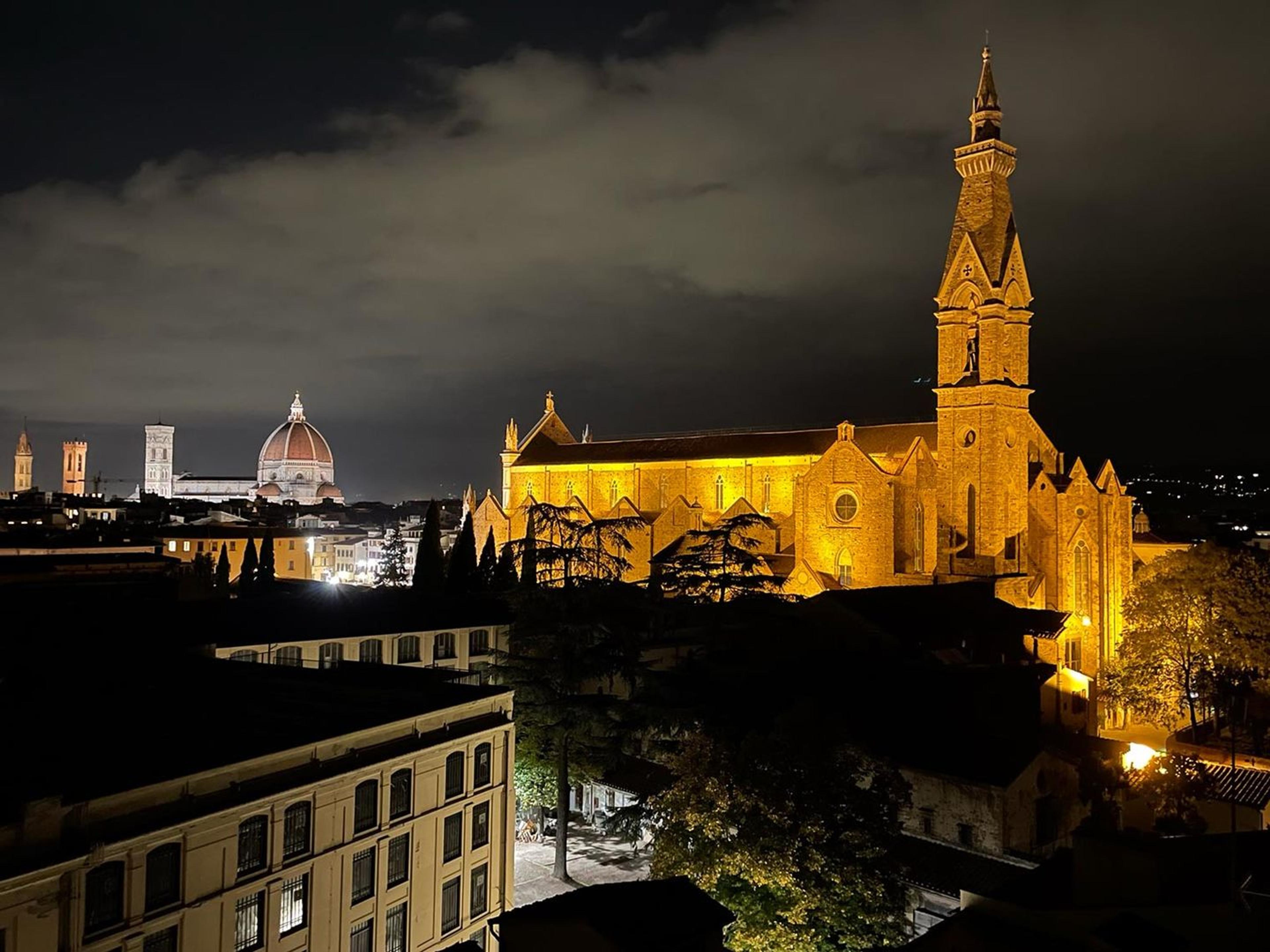
Florence at night, with the Basilica of Santa Croce in the foreground and the Cathedral of Santa Maria del Fiore (the Duomo) to the left. Photo by the author
Notes
[1] “about us | archive history,” Fondazione Alinari per la Fotografia, accessed April 11, 2024, https://www.alinari.it/en/about-us/archive-history.
